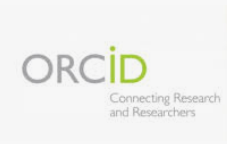Application pharmacopuncture in painful affections of the shoulder
Keywords:
ACUPUNCTURE THERAPY, SHOULDER PAIN, BETAMETHASONE, LIDOCAINE, NERVE BLOCK, TENDINOPATHY, ROTATOR CUFF, TREATMENT OUTCOME, EPIDEMIOLOGY, EXPERIMENTAL, LONGITUDINAL STUDIES, PROSPECTIVE STUDIES, CONTROLLED CLINICAL TRIAL, HUMANS, ADULT, FEMALEAbstract
We carried out an experimental, longitudinal and prospective study, at the Provincial Centre for the Development of Natural and Traditional Medicine Dr. Mario E. Dihigo, during the period from January 2007 to January 2008, with the objective of treating the increased incidence of patients with painful affections of the shoulder, requiring in many cases the usage of long, risk treatments, with results not always satisfactory. The sample was formed by 60 patients who were randomized and divided in two groups. A blockade of the supraescapular nerve with betamethasone and lidocain 2 % in habitual doses was applied to one group; the second one received pharmacopuncture with low doses of betamethasone diluted in water for injection. The treatment was applied 2 times a week and up to the maximum of 6 sessions. They were evaluated weakly for a working group, taking into account the patient's criteria according to the visual analogous scale, according to the medical criteria based on the clinical examination looking for pain, joint mobility limitation and functional balance. Among the studied patients there was a predominance of the female sex beginning from the third and fourth decades of life. Tendinitis of the rotator cuff was the most frequent diagnosis. There was a faster satisfactory recovery in patients treated with pharmacopuncture. Pharmacopuncture therapy in painful shoulder is of higher efficacy than the blockade of the supraescapular nerve.Downloads
How to Cite
Issue
Section
License
All content published in this journal is Open Access, distributed under the terms of the CC BY-NC 4.0 License.
It allows:
- Copy and redistribute published material in any medium or format.
- Adapt the content.
This will be done under the following terms:
- Attribute the authors' credits and indicate whether changes were made, in which case it must be in a reasonable way.
- Non-commercial use.
- Recognize the journal where it is published.
The copyrights of each article are maintained, without restrictions.





